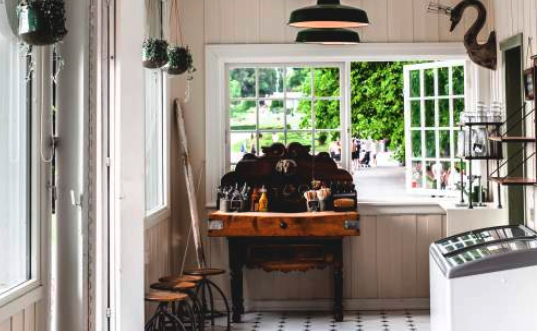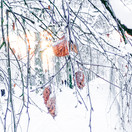Travel tips Oslo - 4. Forognerparken and Vigeland sculpture park
- Ingar Næss

- Jan 7, 2023
- 5 min read
Updated: Jan 19, 2023
Vigeland This is a "must-see" in Oslo. It is often the case that it is the close things that one takes for granted and rather travels around the world to discover something new. We visit exhibitions, museums, parks, and viewpoints and, are "must-see". In addition, you should always eat and enjoy yourself, and we can do more of all this here in Oslo.

Frogner and Vigeland Park Think how lucky we are to have Forgnerparken, the most visited park in Norway and it is located in Oslo. Frognerparken is open 24 hours a day and has free entry and perhaps that is why it has lots of visitors every single day, both tourists and Oslo residents.

First, some history: I am actually a little impressed that already in the 18th century large gardens were planted in Oslo or at that time Kristiania. This happened when the then-owner of Frogner Hovedgård, Hans Jacob Scheel, wanted a baroque garden. This garden was later expanded by, among others, Bernt Anker, who bought the farm in 1790. He extended the main building to its current length, which you can see when you visit the museum.

Here you can find almost the entire story, just click on the > sign on the left.
More than just sculptures, also a lot of plants and trees! Sometimes it's great that we have someone who actually takes care of our history and Frognerparken has also been protected under the Cultural Heritage Act.
When you walk in the park, you must not only look at the sculptures but also let your gaze search for all the trees that actually make the park what it is. Here you will find many different types of wood; Park lime, Scots maple, Sycamore maple, Elm, Poplar, and Ash. If you didn't see it, the park also has Norway's largest rose collection, which consists of 14,000 roses divided into 150 different species.
Welcome to the park!


Vigelandsparken However, it is probably the famous sculpture park, Vigelandsparken, that makes Frognerparken desirable for tourists from all over the world. The park contains over 200 of Gustav Vigeland's sculptures. The Vigeland's facility was mainly completed between 1939 and 1949. Vigeland has also been responsible for the design and architectural design of the park. Read more at Vigelandsmuseet.
"The monolith" is a 17-metre-high stone column carved out of a stone building that is part of the Vigeland plant in Frognerparken in Oslo. It is located on the "Monolith plateau" on Tørtberg hill. The stone block was taken out by engineer Anders Beer at the quarry at Hov by the Iddefjord in 1922 and then transported to Oslo on a barge.
Click on an image to view more images. It was completed by Gustav Vigeland's stonemason assistants, the Swede Nils Jönsson, the Dane Karl Kjær, and the Norwegian Ivar Broe in 1943. The Søylen, which consists of 121 figures, stands at the highest point of Vigeland's facility and Frogner Park and is 17 meters high. The monumental sculpture is surrounded by a circular staircase with 36 groups of granite figures placed in rows up the stairs. The monolith plateau is encircled by a low granite balustrade with eight wrought iron double gates. The name suggests that the sculpture is carved from a single block of granite (Greek mono, 'one' and lithos, 'stone').

There is only one reason that all the sculptures are naked and that is because they are supposed to be the same. No class difference, only a person who is himself, whether they are young or old! So nice now I say! "Sinnataggen" is a sculpture in the Vigeland facility in Frognerparken in Oslo. It depicts a small, angry boy and is considered Gustav Vigeland's most famous sculpture. The "Sinnataggen", which is cast in bronze, was probably modeled in 1928 and installed as one of 58 sculptures on "The Bridge" in the sculpture park in 1940. If you visit the Vigelandsmuseet after your walk in the park, you will be able to learn much more about all his works, including the models of the Sinnataggen.(The angry boy)

Right on the other side is "Small smileing girl" who either smiles at, or laughs at, "Sinnataggen"! In all her years on this side of the bridge, she has almost never been photographed, but that must stop! Take your photo and show the world that there are more than just angry sly boys here.
Yes, it must now be over, see the beautiful rear branch you get when you choose this model. If you want to make her just as popular, just post on TikTok, Snap, Facebook, Instagram, etc.
Frogner Friluftsrestaurant opened its doors on 17 May 1918. Exactly 100 years later, Anne opened in the country on the same premises. After an extensive restoration, the café is open, also in winter, with over 40 seats inside. Home-baked, goods and lunch and dinner dishes are served here in addition to beer, wine and good coffee. All the food is made from scratch and with the heart. The outdoor area is large, so there is almost always a free space. The over 100-year-old outdoor furniture has been refurbished with the help of Frognerparken's friends. The restaurant is almost part of Frogner Hovedgård and the City Museum is located on the corner down towards Frogner. In the corner of Frognerparken, which is closest to Majorstua, is Frogner Stadium and Frogner swimingpool.
At the main entrance from Kirkeveien, you will find the Frognerborgen playground. The playground is designed for families and has fixed grills and benches, and tables.
In Frognerparken you will find both a cafe and a restaurant. There are permanent grills in the park and separate waste containers for disposable grills. There are also public toilets in the park. In the park, there is also a separate dog area which is a free area for dogs.

Frognerelva renner inn nord i Frognerparken og danner to dammer inne i parken, Frognerdammene.
Winter in Vigelands Park
Frognerparken is also a very pleasant place to air both body, soul, spouse, and dogs, also in the winter. Have a good time!

Here are tips on places to visit in Oslo. I will introduce them in turn. Sign up for our news update. Log in at the top of the page.
1. Tryvann, Frognersetreren med Midstubakken og Holmenkollen Kapell.
2. Roseslottet til Vebjørn Sand. This is more important than ever, as it is about our freedom and what we lose if or when war breaks out. We must never, never forget!
3. Holmenkollen, with Historic Holmenkollen Park Hotel and Holmenkollen Restaurant.
4. Frognerparken og Vigelandsparken A fantastic park and sculpture complex with an exciting history, which you can also read more about at the Vigerladsmuseet below. In the park, you can also enjoy yourself with friends and or take a trip to the park's restaurants and kioskers. - here you are now!
- Vigelandsmuseet, The man, the art, the park and the museum! In addition to his art, the man Gustav Vigeland also has a strong erotic history.
Kommer
· Det Kongelige Norske Slott
· Oslo Rådhus
· Nasjonalmuseet
· Aker Brygge
· Akershus Festning
· Operaen
· Deichmanske Bibliotek
· Munchmuseet
· Ekeberg Skulpturpark
· Fredete hus og områder i Oslo
- Fram, Kontiki, Vikingeskip
og ca 50 andre steder å se, oppleve, smake og nyte, lytte til her i Oslo!



















































































































































